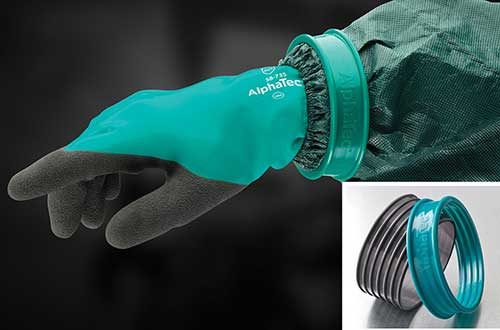Glove seal concerns
I’m having a hard time getting a good seal between my chemical gloves and the sleeve of my suit. How can I make sure I’m protected?

Responding is Paul Bryce, vice president and general manager, chemical solutions strategic business unit, Ansell, Iselin, NJ.
Chemicals and the potential for worker exposure to them are abundant in the workplace. According to OSHA, U.S. workers use tens of thousands of chemicals every day. The frequent use of chemicals comes with an increased risk of physical and health hazards for workers. To ensure chemical protection, workers must be outfitted with proper personal protective equipment.
That’s easier said than done. Donning a complete set of proper chemical protection is necessary, and plenty of appropriate gloves and suits are on the market. However, one area often overlooked when donning chemical PPE is the seal between a chemical glove and suit. No matter how effective the suit and glove may be independently, thorough protection will depend on the seal you manage to achieve between the two pieces of PPE. If a secure seal isn’t established, chemicals can easily work between the layers and penetrate the skin.
Some workers rely on the double cuff of a garment sleeve for protection, positioning the glove between the inner and outer cuff. Although it’s a step up from a single cuff, it doesn’t provide a liquid-tight seal. Furthermore, repetitive motion or reaching overhead often causes the glove and suit to move, creating an opportunity for a chemical to pass through the layers of PPE.
The most standard sealant practice in the workplace today relies on an everyday household item: duct tape. Workers commonly resort to taping their glove and suit cuff together, as it’s a quick and easy fix. Although this does provide a seal, it relies on human ability to create a consistent liquid-tight connection – something nearly impossible to ensure. The unreliable practice can result in an inefficient seal, which often isn’t identified until a chemical leaks through.
Not only is taping inconsistent, it also jeopardizes the integrity of the product and causes waste. Many gloves and suits are reusable if no chemical exposure occurs or the equipment is decontaminated properly. However, removing tape destroys the top layer of the suit and the glove, requiring disposal of both items. This leads to PPE being disposed prematurely – a waste of both equipment and valuable safety dollars.
Worker needs and problems often breed innovation, and a new type of PPE recently has entered the market: glove connectors – PPE specifically designed to create a reliable liquid-tight seal between chemical gloves and coveralls. A glove connector is often composed of two parts. One ribbed cone is inserted into the glove, which then is fitted into the sleeve and secured by sliding an outer collar over the glove and sleeve until tightly locked in position. These solutions are easier to put on and remove by an individual, comfortable throughout the day, and more consistent than connections made with tape.
Peace of mind and reliability is critical when it comes to trustworthy chemical protection. For workers and safety experts whose best option for decades has been duct tape, it’s promising to know recent innovations can provide a more consistent seal and the potential to reuse PPE, protecting the need for both performance and protection every day.
Reference
“Chemical hazards and toxic substances,” OSHA. Available at osha.gov/SLTC/hazardoustoxicsubstances.
Editor's note: This article represents the independent views of the author and should not be construed as a National Safety Council endorsement.
Post a comment to this article
Safety+Health welcomes comments that promote respectful dialogue. Please stay on topic. Comments that contain personal attacks, profanity or abusive language – or those aggressively promoting products or services – will be removed. We reserve the right to determine which comments violate our comment policy. (Anonymous comments are welcome; merely skip the “name” field in the comment box. An email address is required but will not be included with your comment.)

